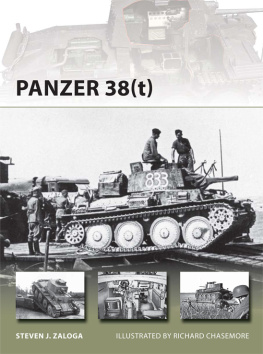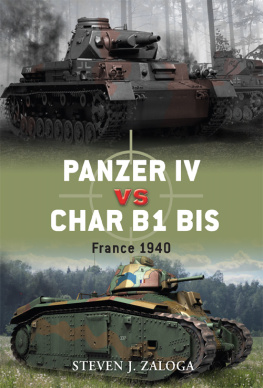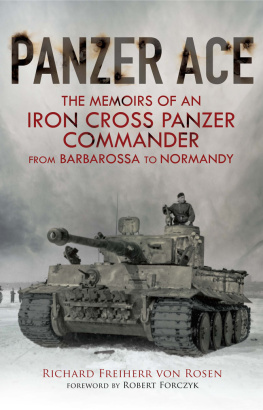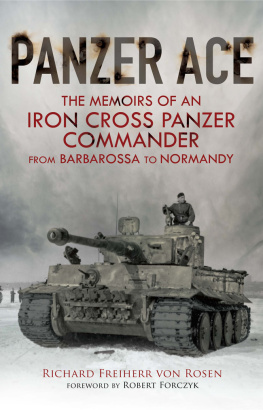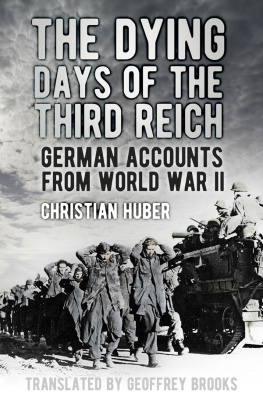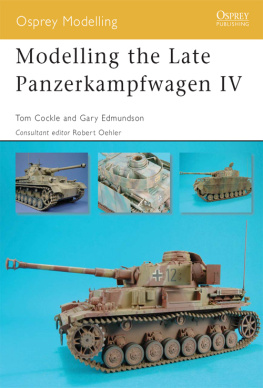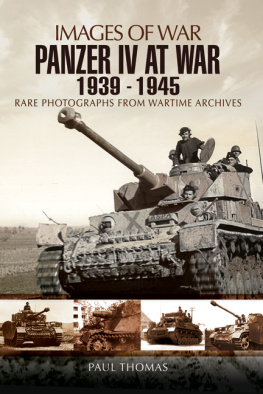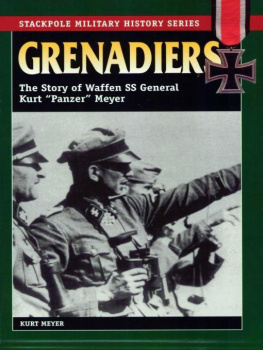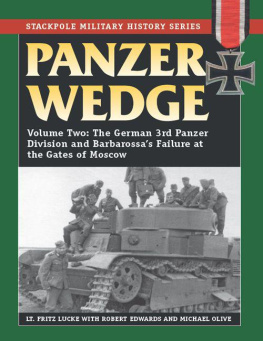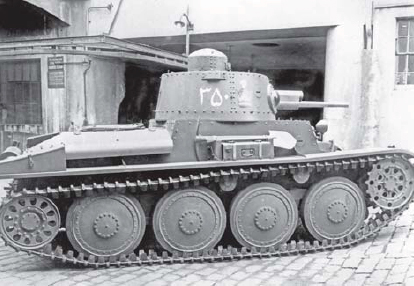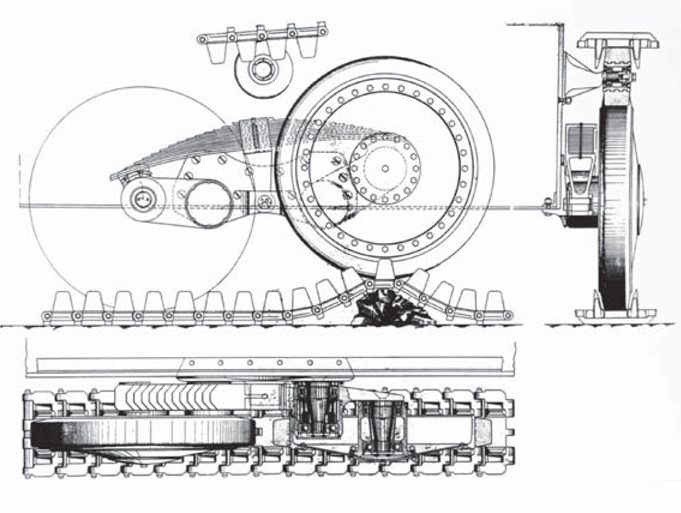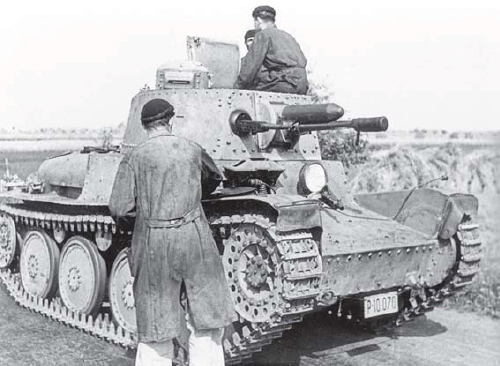NEW VANGUARD 215
PANZER 38(t)
A PzKpfw 38(t) Ausf. B during training exercises at Truppenbungsplatz Baumholder on April 2, 1940. This is a Zugfhrer tank, evident from the armored plate covering the hull machine-gun opening. This was necessary to provide enough space in the hull for the Fu 2 and Fu 5 radio transceiver.
| STEVEN J. ZALOGA | ILLUSTRATED BY RICHARD CHASEMORE |
CONTENTS
PANZER 38(t)
INTRODUCTION
Originally designed for the army of the Shah of Persia by an migr Russian engineer, the PzKpfw 38(t) was the only tank of foreign origin to remain in production for the Wehrmacht throughout World War II. When Germany occupied the Czech provinces in 1939, it inherited the small but sophisticated Czech tank industry. The best of the new Czech tanks, the LT 38, was an essential ingredient in enlarging the panzer force in 193941. The majority of German tanks were armed with inadequate machine guns and 20mm cannon, but the Czech tanks offered an excellent 37mm gun. The PzKpfw 38(t) proved to be a reliable and effective tank during the Blitzkrieg campaigns of 193941, making up nearly a fifth of the panzer force. Its combat effectiveness diminished rapidly after 1941 when confronted with the new generation of Soviet tanks such as the T-34 and KV. Besides its use by German tank units, the PzKpfw 38(t) and its relatives were widely exported and served in a diverse selection of armies including neutrals such as Sweden and Switzerland, as well as with Germanys allies such as Hungary and Romania. It was withdrawn from front-line German service by 1943, but it remained in use in secondary roles such as anti-partisan units. Manufacture of the tank version of the PzKpfw 38(t) ended in the summer of 1942, but the chassis remained in production throughout the war for a variety of self-propelled guns and tank destroyers. This book deals with the tank variants of this prolific model.
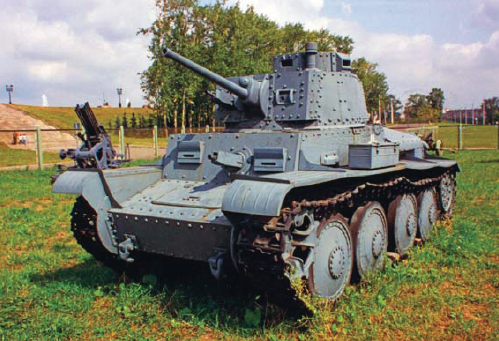
This PzKpfw 38(t) Ausf. E is preserved at the Memorial Museum at Poklonna Gora outside Moscow.
Export Tank Origins
When the Austro-Hungarian Empire collapsed in 1918, the newly independent Czechoslovakia inherited a substantial arms industry. Since the domestic market for armaments was so limited, Czechoslovak firms pursued the international armament business. In the 1930s, Czechoslovakia often ranked third in the world after Britain and France. By this time there were two firms involved in the tank business, the well-known armament firm koda in Plzen (Pilsen) and the newcomer, KD (eskomoravsk-Kolben-Dank) formed in Praga (Prague) in 1927. KDs first big program was the licensed manufacture of the British Carden-Loyd Mk. VI tankette in modified form for the Czechoslovak Army as the Tanik vz. 30. It was followed by the LT vz. 34 light tank, roughly in the category of the Vickers 6-ton tank, with 44 purchased by the Czechoslovak Army. The LT abbreviation means Lekh Tank (Light Tank). Although offered for export, no foreign sales were made.
The principal design engineer at KD was an migr Russian, Alexej Surin, who had migrated to Czechoslovakia in the wake of the Russian Civil War. His first successful export design was the Praga AH-IV tankette. Although called a tankette, it was significantly larger than Carden-Loyd types, and was fitted with a small turret. This new type also pioneered the large road-wheel design that would become a hallmark of Surins later light tanks. Although the large road wheels might be mistaken for a Christie-type suspension, in fact the Surin design used a bogie consisting of twin road wheels pivoting on a single horizontal spring rather than the individual vertical springs of the famous Christie tanks. KD enjoyed its first export success with this tankette, agreeing to sell 30 AH-IVs to the Persian Army (Iranian after 1935). This sale proved vital to the future of the company, as it led to a succession of export orders including those from Romania and Sweden.
With the AH-IV program underway, KD also began work on a modernized light tank incorporating the new suspension design. The TNH light tank was intended to compete against the Vickers 6-ton tank in the export market. It won its first export success at the same time as the AH-IV, with an Iranian order in May 1935. The TNH light tank was armed with a koda 37mm A4 Beta gun as well as two machine guns, and had a 15mm armor basis. In total, 50 TNH tanks were built for Iran at KDs Slan plant, with delivery completed in May 1937.
The ancestor of the PzKpfw 38(t) was the TNH light tank, with 50 manufactured for the Iranian Army in 1937. There are few details on whether they took part in the fighting with the British and Soviet armies following the August 25, 1941 invasion of Iran.
The LT vz. 38 family used an advanced suspension bogie based on two large road wheels mated to a central spring and arm.
The Iranian tanks were deployed in the new Imperial Mechanized Brigade formed in Tehran. It consisted of three regiments: the 1st Antiaircraft Regiment equipped with 75mm Bofors guns towed by Marmon-Herrington trucks, the 2nd AFV Regiment, and the 3rd Mechanized Infantry Regiment. The 2nd Regiment was based on three battalions: a light-tank battalion with the AH-IV tankettes, a medium-tank battalion with the LTH light tanks, and an armored-car squadron with a dozen Marmon-Herrington armored cars. The history of the Mechanized Brigade is obscure. A 1940 Indian Army intelligence report offered a disparaging view of its military effectiveness: The tanks are seldom seen except on the day of the Annual Review when the Brigade is smartly turned out. The personnel are indifferently trained and the tanks are badly driven across country, being frequently stalled at obstacles. The Brigade would appear to have been intended to serve as a palace guard for the Pahlavi dynasty in Tehran. It is not known if it was involved in any of the fighting following the BritishSoviet invasion of August 25, 1941. Nor is it clear whether the tanks took part in the separatist civil war in 1946. The LTH remained in service well into the 1950s.
The new LTH design proved to be a success in the export market, attracting attention from several armies. The Spanish Civil War demonstrated the vital role of tanks on the modern battlefield, and there was a binge of re-armament in Europe. Since several of the potential clients expressed interest in a somewhat lighter and less expensive tank, KD developed a derivative with lighter armor.
The firm signed several export orders in quick succession in 1937. On May 27, 1937, the Latvian Army ordered 21 LTL tanks in the lighter configuration and armed with 20mm Oerlikon cannon. In the event, Latvia later switched its order to the heavier LTH configuration, but the Soviet occupation in March 1940 put an end to the program before the tanks could be delivered. As will be detailed later, these ended up in the Slovak Army.
Next page
